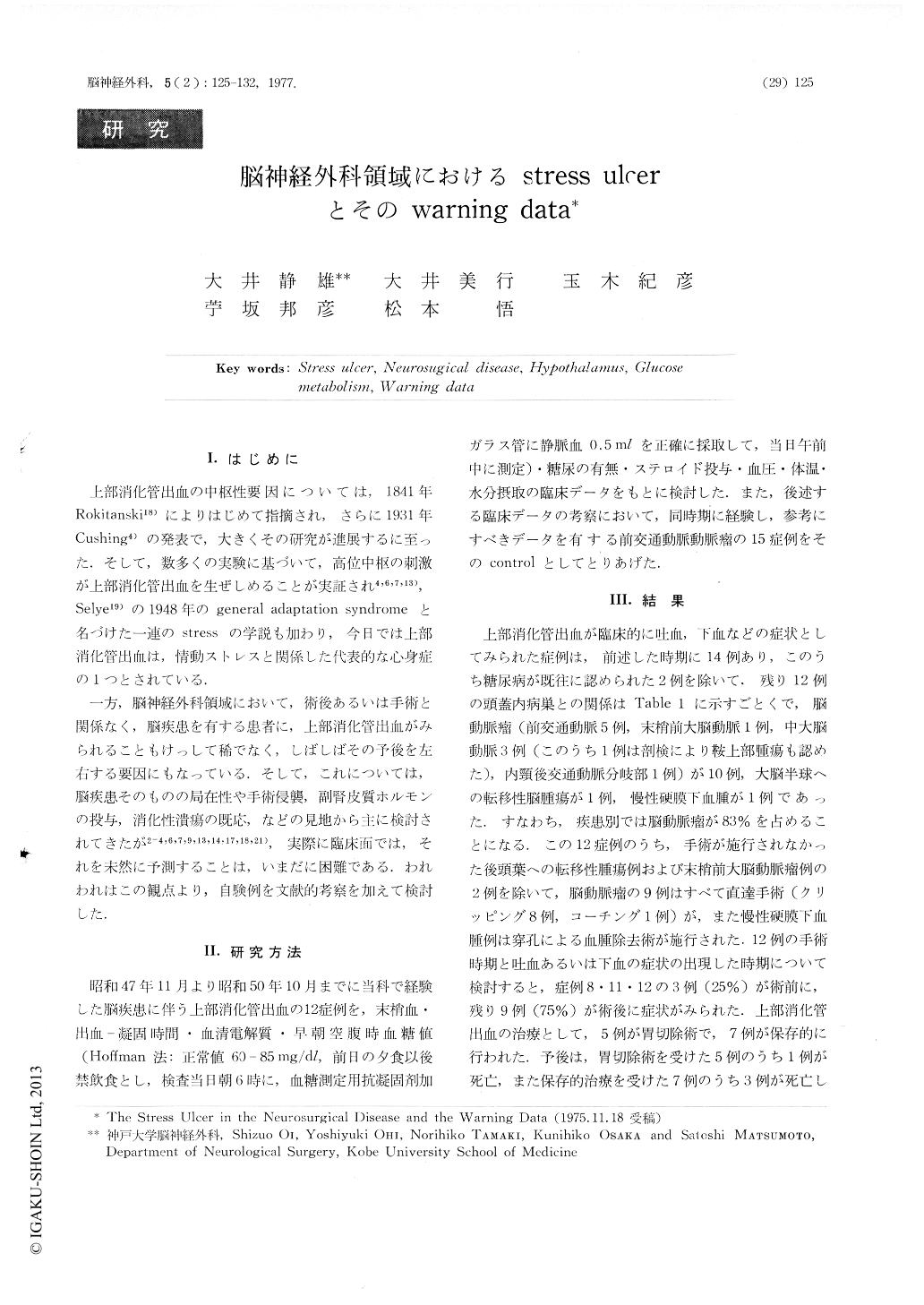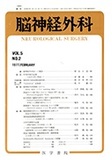Japanese
English
- 有料閲覧
- Abstract 文献概要
- 1ページ目 Look Inside
Ⅰ.はじめに
上部消化管山血の中枢性要因については,1841年Rokitanski18)によりはじめて指摘され,さらに1931年Cushing4)の発表で,大きくその研究が進展するに至った.そして,数多くの実験に基づいて,高位中枢の刺激が上部消化管出血を生ぜしめることが実証され4,6,7,13),Selye19)の1948年のgeneral a(laptation syndrolneと名づけた一連のstressの学説も加わり,今日では上部消化管出血は,情動ストレスと関係した代表的な心身症の1つとされている.
一方,脳神経外科領域において,術後あるいは手術と関係なく,脳疾患を有する患者に,上部消化管出血がみられることもけっして稀でなく,しばしばその予後を左右する要因にもなっている.そして,これについては,脳疾患そのものの局在性や手術侵襲,副腎皮質ホルモンの投与,消化性潰瘍の既応,などの見地から主に検討されてきたが2-4,6,7,9,13,14,17,18,21),実際に臨床面では,それを未然に予測することは,いまだに困難である.われわれはこの観点より,自験例を文献的考察を加えて検討した.
Twelve cases of G.I. tract bleeding, treated in the Department of Neurosurgery, Kobe University School of Medicine, were analyzed with the special reference to clinical data before the episode of G.I. tract bleeding.
These 12 cases consist of 10 cases of aneurysm, 1 of metastatic brain tumor, and 1 of chronic subdural hematoma The anterior communicating artery has the majority in the case of aneurysm by 50 per cent.

Copyright © 1977, Igaku-Shoin Ltd. All rights reserved.


